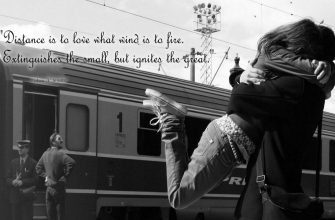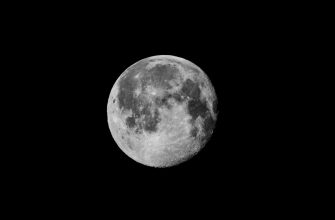Stalingrad remembered

Few battles on the Eastern front in World War Two are remembered by people in the West. Ask anyone about the battles around Kharkov, or the perfect breakthrough of Operation Bagration, and you’re unlikely to get an answer. But mention Stalingrad, and most people will know that a titanic battle happened there, even if they couldn’t tell you where it is.
Stalingrad is probably best remembered as the place where the Nazi expansion into Europe came up against a Russian heroic defense. For the Russian people, it is one of their proudest episodes, one of their best military operations of the War.
By the winter of 1941, the Germans had been victorious in every theatre of war. They had taken Poland, Denmark, Norway, Belgium, Holland and France in a series of quick campaigns that stunned the world. Britain was next, but it was only bombed from the air. Next, the Nazis turned east, taking Yugoslavia and Greece, and parts of North Africa.
Hitler’s main aim had always been to take Russia. The Germans began their war on Russia in June 1941. Initially, the invasion of Russia went well for the Germans. Tanks drove deep into Russian defences, encircling great pockets of Russian units. These were then “squeezed” to destruction.
But the German plan stalled at the gates of Moscow and Leningrad as winter began. Russian counterattack during the winter tested the Germans to their limits.
The German plan for 1942 was to continue the push southeast to the rich oil fields of the Caucasus. The plan failed because of ideology. Northeast of the Caucasus was the city of Stalingrad (now Volgograd). Militarily it was useful to take. It could be used to start attacks into the Siberian industrial heartland. But its main prize was that it had the name of Hitler’s enemy: Josef Stalin, the leader of the Soviets.
The open plains of Russia were good country for the mobile German tanks supported by air- attacks: Blitzkrieg, literally, “lightning war”. However, the block-by-block, house-by-house and room-by-room fighting that happened in the city of Stalingrad didn’t suit the German method of war. The heroic Russian defense made the Germans pay for every yard of ground, and the Germans were shocked by the ferocity of Russian defence.
Summer turned to autumn, and the battle became a matter of survival. Losses on both sides were huge.
By the middle of September, Hitler had a whole army (about 250,000 men) in Stalingrad.
Soviet High Command — under Marshal Georgi Zhukov — had realised the opportunity. With Stalingrad as the bait, they planned to tempt a large German force into this giant trap.
On either side of the German forces in Stalingrad were Germany’s allies: the Rumanians and Italians. Militarily weaker, these units had been left to defend hundreds of miles of “quieter” parts of the massive front.
Zhukov built up a big reserve facing these weaker units on the “flanks” of Stalingrad. He was waiting for the winter snow that would slow German tank movement, and leave German aircraft grounded, all to Russian advantage. Finally, on the 21st of September the Russian counter-attack started. The Rumanian and Italian lines collapsed. Now it was the Germans’ turn to learn what it was like to be encircled.
Within days Stalingrad was isolated from the rest of the German Army. Like an expert boxer, Zhukov had timed his blows to perfection.
A breakout was still possible for the Germans trapped in Stalingrad, but Hitler’s pride would not allow it.
Russian troops now began to “squeeze” the German pocket, chasing the Nazis deeper into the city, and into a smaller area. In the city, German ammunition, food and medicine were in short supply. Hitler ordered the Sixth Army to fight on, indifferent to the suffering of his men. On 31 January 1943 the German Sixth Army surrendered to the Russians. Almost 65,000 Germans were prisoners.
It was the first serious defeat the Germans had suffered in the war, and it was the start of Russian military ability to assert itself. They had outfought, outsmarted and defeated the German “super-man”. Stalingrad was a ruin, but now people in the west understood the bravery and military power of Russia.
In 1943, the Germans were only able to make small attacks, not the big advances of 1940-1941. Meanwhile, the Russians were continuing to develop their arms, and in 1944-45 would crush the Germans. By April 1945, the Russians were in Berlin, knocking on the door of Hitler’s bunker, and raising the flag of the hammer and sickle, where the swastika had been. 
Mark Concannon (Speak out 2, 2005)
Сталинград помнит (Сталинградская битва)
Несколько боев на Восточном фронте во время Второй мировой войны помнят люди на Западе. Спросите любого о боях в районе Харькова, или совершенного прорыва операции Багратион, и вы вряд ли получите ответ. Но стоит упомянуть Сталинград, и большинство людей будут знать, что титаническая битва произошла там, даже если они не смогут сказать, где он находится. Сталинград, вероятно, лучше всего помнят как место, где нацистская экспансия в Европу столкнулась с Российской героической обороной. Для русского народа, это один из их самых гордых эпизодов, одна из лучших военных операций войны.
К зиме 1941 года, немцы победили в каждом театре военных действий. Они взяли Польшу, Данию, Норвегию, Бельгию, Голландию и Францию в серии быстрых кампаний, которые потрясли мир. Британия была следующей, но ее только бомбили с воздуха. Затем нацисты повернули на восток, взяв Югославию и Грецию, и части Северной Африки.
Основная цель Гитлера всегда была захватить Россию. Немцы начали войну в России в июне 1941 года. Первоначально, вторжение в Россию шло хорошо для немцев. Танки поехали вглубь российской обороны, окружая большие карманы российских подразделений. Они были тогда «сжаты» для разрушения. Но немецкий план застопорился у ворот Москвы и Ленинграда, когда началась зима. Русская контратака во время зимы проверяла немцев на прочность.
Немецкий план на 1942 год был продолжить оттеснять юго-восток до богатых нефтяных месторождений Кавказа. План провалился из-за идеологии. Северо-восток Кавказа был город Сталинград (ныне Волгоград). Его было полезно захватить для военных целей. Он мог быть использован для атак на Сибирский промышленный центр. Но его главная ценность была в том, что город носил имя врага Гитлера: Иосифа Сталина, лидера Советов.
Открытые равнины России были хорошей местностью для мобильных немецких танков, поддерживаемых воздушными атаками: Блицкриг, буквально, «молниеносная война». Тем не менее, битва квартал за кварталом, дом за домом, комната за комнатой, которая произошла в городе Сталинграде не подходила немецкому методу войны. Героическая оборона России заставила немцев заплатить за каждый ярд земли, и немцы были потрясены жестокостью русской обороны. Лето сменилось осенью, и битва стала вопросом выживания. Потери с обеих сторон были огромны.
К середине сентября Гитлер имел целую армию (около 250000 мужчин) в Сталинграде.
Советское верховное командование под предводительством маршала Георгия Жукова — поняли возможность. Со Сталинградом в качестве приманки, они планировали заманить немецкие войска в свою гигантскую ловушку. По обе стороны от немецких войск в Сталинграде были союзники Германии: румыны и итальянцы. В военном смысле слабее, эти подразделения были оставлены, чтобы защитить сотни километров «тихих» частей массивного фронта. Жуков создал большой резерв для окружения этих слабых единиц на «флангах» Сталинграда. Он ждал зимний снег, который привел к замедлению движения немецких танков и заставил ВВС Германии приземлиться, все это было преимуществом для русских. Наконец, 21 сентября началась контратака России. Румынская и итальянская линии рухнули. Теперь настала очередь немцев узнать, что значит быть окруженным. В течение нескольких дней Сталинград был изолирован от остальной части немецкой армии. Как профессиональный боксер, Жуков отработал свои удары до совершенства. Побег был еще возможен для немцев, захваченных в Сталинграде, но гордость Гитлера не позволила этого. Теперь Российские войска начали «сжимать» немецкие карманы, загоняя нацистов глубже в город, на меньшую территорию. В городе, немецкие боеприпасы, продовольствие и медикаменты были в дефиците. Гитлер приказал шестой армии продолжать сражаться, оставшись равнодушным к страданиям своих людей. 31 января 1943 года немецкая шестая армия сдалась русским. Почти 65 тысяч немцев были заключенными.
Это было первым серьезным поражением немцев в войне, и это было началом российской военной способности самоутвердиться. Они побороли, перехитрили и победили немецких суперменов. Сталинград был в руинах, но теперь люди на западе понимали храбрость и военную мощь России.
В 1943 году немцы смогли лишь совершить небольшие атаки, а не большие успехи 1940-1941годов. Между тем, россияне продолжают развязывать свои руки, и в 1944-45 годах раздавят немцев. К апрелю 1945 года, русские были в Берлине, стучались в дверь бункера Гитлера, и подняли флаг с серпом и молотом на то место, где была свастика.
Sergeant Pavlov defended this house with a handful of defenders from constant German attacks. They were surrounded and held out for 59 days until help arrived. They say that more German soldiers died outside PAVLOV’S HOUSE than during the invasion of Paris. The building was left the way it was as a memorial site and a symbol of Russian soldiers’ enduarance, determination and courage. It can be still visited today.
Сержант Павлов защитил этот дом с горсткой защитников от постоянных немецких атак. Они были окружены и продержались 59 дней, пока не прибыла помощь. Говорят, что больше немецких солдат погибли за пределами Дома Павлова, чем во время вторжения в Париж. Здание было оставлено в качестве мемориала и символа решимости и мужества российских солдат. Этот дом можно посетить и сегодня.
Battle of Stalingrad
Contents
The Battle of Stalingrad was a brutal military campaign between Russian forces and those of Nazi Germany and the Axis powers during World War II. The battle is infamous as one of the largest, longest and bloodiest engagements in modern warfare: From August 1942 through February 1943, more than two million troops fought in close quarters – and nearly two million people were killed or injured in the fighting, including tens of thousands of Russian civilians. But the Battle of Stalingrad (one of Russia’s important industrial cities) ultimately turned the tide of World War II in favor of the Allied forces.
Prelude to the Battle of Stalingrad
In the middle of World War II – having captured territory in much of present-day Ukraine and Belarus in the spring on 1942 – Germany’s Wehrmacht forces decided to mount an offensive on southern Russia in the summer of that year.
Under the leadership of ruthless head of state Joseph Stalin, Russian forces had already successfully rebuffed a German attack on the western part of the country – one that had the ultimate goal of taking Moscow – during the winter of 1941-42. However, Stalin’s Red Army had suffered significant losses in the fighting, both in terms of manpower and weaponry.
Stalin and his generals, including future Soviet Union leader Nikita Khrushchev, fully expected another Nazi attack to be aimed at Moscow. However, Hitler and the Wehrmacht had other ideas.
They set their sights on Stalingrad, because the city served as an industrial center in Russia, producing, among other important goods, artillery for the country’s troops. The Volga River, which runs through the city, was also an important shipping route connecting the western part of the country with its distant eastern regions.
Ultimately, Adolf Hitler wanted the Wehrmacht to occupy Stalingrad, seeing its value for propaganda purposes, given that it bore Stalin’s name. For similar reasons, the Russians felt a special need to protect it.
When Hitler proclaimed that upon taking Stalingrad all of the city’s male residents would be killed and its women deported, the stage was set for a bloody, hard-fought battle. Stalin ordered all Russians strong enough to hold a rifle to take up arms in defense of the city.
The 6th Army of the Wehrmacht began their assault on August 23, 1942.
Battle of Stalingrad Begins
Russian forces were initially able to slow the German Wehrmacht’s advances during a series of brutal skirmishes just north of Stalingrad. Stalin’s forces lost more than 200,000 men, but they successfully held off German soldiers.
With a firm understanding of Hitler’s plans, the Russians had already shipped much of the stores of grain and cattle out of Stalingrad. However, the city’s 400,000-plus residents were not evacuated, as the Russian leadership believed their presence would inspire troops.
Within a few days of launching its attack, Germany’s Luftwaffe air force had rendered the Volga River impassable to shipping and had sunk several Russian commercial vessels in the process. From late August through the end of the assault, the Luftwaffe conducted dozens of air strikes on the city.
The number of civilian casualties is unknown. However, it’s believed that tens of thousands were killed, and that tens of thousands more were captured and forced into slave labor in camps in Germany.
By September, the Luftwaffe essentially had control of the skies over Stalingrad, and the Russians were getting desperate. Workers in the city not involved in war-related weapons production were soon asked to take up fighting, often without firearms of their own. Women were enlisted to dig trenches at the front lines.
And yet, the Russians continued to suffer heavy losses. By the fall of 1942, Stalingrad was in ruins.
‘Not a Step Back!’
Despite heavy casualties and the pounding delivered by the Luftwaffe, Stalin instructed his forces in the city to not retreat, famously decreeing in Order No. 227: “Not a step back!” Those who surrendered would be subject to a trial by military tribunal and face possible execution.
With fewer than 20,000 troops in the city and less than 100 tanks, Stalin’s generals finally began sending reinforcements into the city and surrounding areas. Fighting raged in the streets of Stalingrad, with both sides using snipers poised on the roofs of the city’s buildings.
Russian generals Georgy Zhukov and Aleksandr Vasilevsky organized Russian troops in the mountains to the north and west of the city. From there, they launched a counterattack, famously known as Operation Uranus.
Although they again sustained significant losses, Russian forces were able to form what in essence was a defensive ring around the city by late November 1942, trapping the nearly 300,000 German and Axis troops in the 6th Army. This effort became the subject of a propaganda film produced after the war, The Battle of Stalingrad.
With the Russian blockade limiting access to supplies, German forces trapped in Stalingrad slowly starved. The Russians would seize upon the resulting weakness during the cold, harsh winter months that followed.
Russian Winter Sets In
As Russia’s brutal winter began, Soviet generals knew the Germans would be at a disadvantage, fighting in conditions to which they weren’t accustomed. They began consolidating their positions around Stalingrad, choking off the German forces from vital supplies and essentially surrounding them in an ever-tightening noose.
Thanks to Russian gains in nearby fighting, including in Rostov-on-Don, 250 miles from Stalingrad, the Axis forces – mostly Germans and Italians – were stretched thin. Through Operation Little Saturn, the Russians began to break the lines of mostly Italian forces to the west of the city.
At this point, German generals abandoned all efforts to relieve their beleaguered forces trapped in Stalingrad. Still, Hitler refused to surrender even as his men slowly starved and ran out of ammunition.
Battle of Stalingrad Ends
By February 1943, Russian troops had retaken Stalingrad and captured nearly 100,000 German soldiers, though pockets of resistance continued to fight in the city until early March. Most of the captured soldiers died in Russian prison camps, either as a result of disease or starvation.












